11 Cheap Swaps for Expensive Grocery Store Products
When I started this article, there were 10 days till my next paycheck and roughly $200 left in my bank account. Not a lot — and certainly not enough to indulge in big-ticket items if I wanted my money to last.
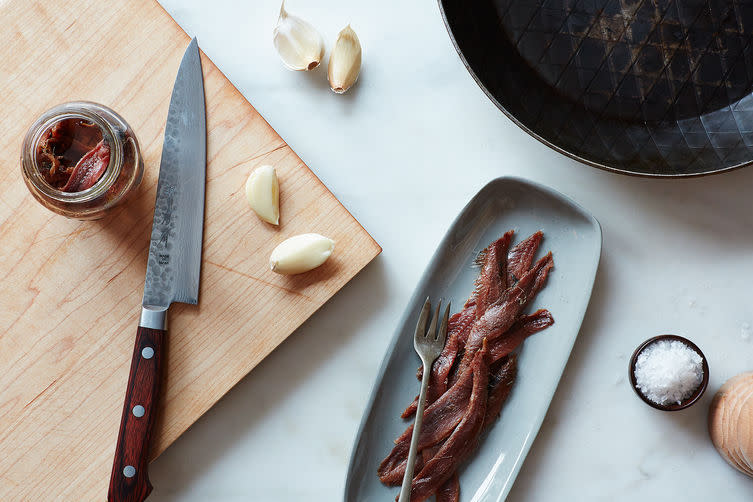
Anchovies, garlic, and salt. (Photo: James Ransom)
As a home cook on a budget, I’m mindful of how much things cost. Dairy and pantry items often dismay me with their high prices. That doesn’t mean I don’t buy them (I’m looking at you, pine nuts!), but it does mean I think twice about what I really want and need, and what, if any, economical hacks I can implement or substitutes I can use.
Here are items that I don’t just toss into my cart:
1. Vanilla Beans
In my baking life, I’ve bought vanilla beans exactly once and it was so long ago, I cannot recall why. Though feather-light, at $116.80, they’re hardly cheap. They’re a labor-intensive spice that grow from orchids; they need hand pollination, for crying out loud; and the biggest producers are now in faraway Madagascar and Indonesia.
Related: How to Keep an Avocado from Browning
The price seems justified, certainly, but if you’re like me and just cannot get over that high per pound cost, rest assured there is an easy substitute: vanilla extract, which costs $4.12 for a two-ounce jar. (There’s also imitation vanilla extract, which costs about $1.60 for an eight-ounce jar if even extract is too much.)
Related: If You Can’t Afford This Bottle, Go With That

Roasted plums with vanilla beans. (Photo: James Ransom)
Opinions vary on exact substitution ratios; anywhere between 1 teaspoon and 1 tablespoon extract per bean should do it—but keep in mind, it depends on how much of a vanilla essence you want in your dish. Some home bakers insist on using vanilla bean when infusion is called for—in hot chocolate, for instance. For my friend Lia Miller, vanilla bean is essential in crème brûlée or a crème pâtissière—“in other words, in something that really needs a fresh taste of vanilla,” she wrote in an email. “In cake batter, vanilla extract is fine.”
Related: How to Brunch on a Budget
Others disagree. My other friend Rachel Porter is among them. “The seeds are cute and signal snaz,” Porter said, “but I can’t think of a time when they really improve flavor more than an excellent vanilla extract”—which, in any case, she makes herself from vanilla bean.
Related: How to Eat Well on a Budget
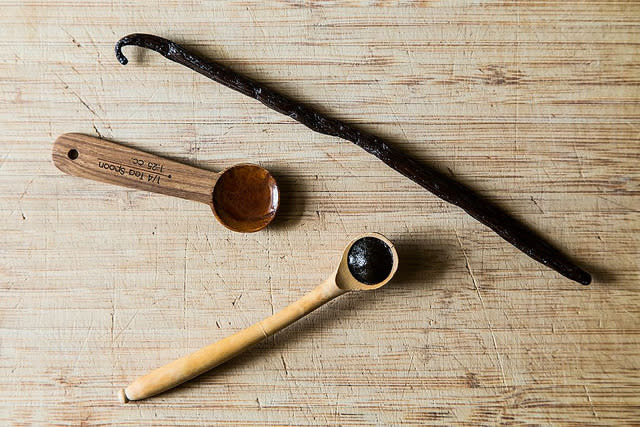
Vanilla bean. (Photo: Food52)
2. Walnuts
Like most nuts, they’re not cheap; at the Fairway near my office, they go for $13.99 a pound if I buy the supermarket’s pre-packed option. If I go for the halves and pieces together they’re a bit cheaper at $11.99 a pound.
Related: 7 Budget-Friendly Weekend Kitchen Projects
Other nuts are in the same ballpark: Almonds are $9.99 a pound and pecans, which I only ever buy to make pie at Thanksgiving, are $13.99. There are cheaper options, but you get what you pay for: I worry that the pre-packed walnuts might sit around for a long time. The difference in price when buying freshly packaged nuts — or nuts from a regularly replenished bulk bin — is sufficiently small that it’s worth it to me to spend the extra pennies for the fantasy (or is it delusion?) that I’m eating well.
Related: How an Organized Kitchen Can Help Save You Money
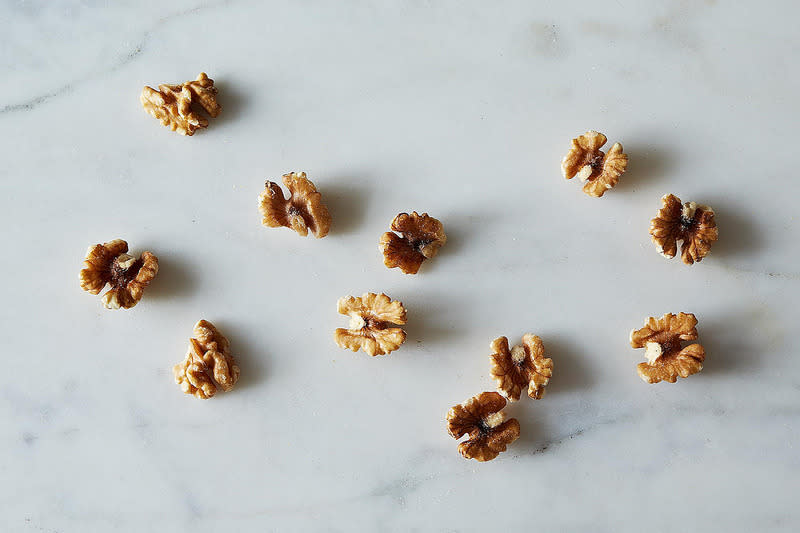
Walnuts. (Photo: James Ransom)
3. Artichoke Hearts
I heart artichoke hearts but am generally too lazy to steam fresh artichokes (it takes 45 minutes at least!). Artichoke hearts that someone else has prepared will do me just fine. In olive oil at the deli counter they run about $7.48 per pound.
While I generally like olive oil, in this case, I find it obscures the artichoke taste rather than enhances. I like my artichoke hearts unadulterated—or to be adulterated by dressing that I administer. Native Forest whole artichoke hearts (in water they weigh almost 10 ounces; the dry weight is about 5 1/2 ounces), cost $2.57 and are good enough for me to eat as a snack straight out of the jar, or to add to a salad where my own dressing dresses them up just fine.
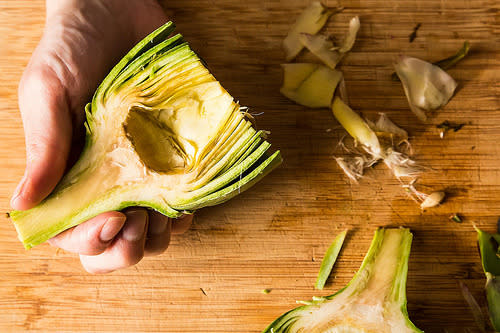
Artichoke hearts. (Photo: James Ransom)
4. Crème Fraîche
With accents grave and circonflexe and a relatively high price ($3.74 for 7 ½ ounces), crème fraîche intimidates. A higher-fat cousin to the more pedestrian seeming sour cream — itself quite delicious with blueberries mixed in, and, at $3.16 for 16 ounces, economical — crème fraîche as something to pay for is, comment dit-on, passé.
In the past, crème fraîche was a French import and considered a specialty item. Those attributes accounted for its relative expense. Now that dairies at home are making it, it’s harder to understand why it remains expensive. If you want it but don’t want to pay for it, though, there’s an easy solution: Substitute sour cream, or make it yourself with heavy cream and yogurt, and gain that invaluable special satisfaction of self-sufficiency.

Crème fraîche plum cake with plum caramel topped with yogurt. (Photo: James Ransom)
5. Cultured Butter
Butter is cultured when the cream used to make it is fermented before it’s churned. Fans say it’s got a nuttier, tangier taste than regular butter and, because added cultures increase fat content, it makes baked goods even better. Maybe the extra step taken to add cultures to the cream is what causes its higher price — not to mention the cost of high-quality cream in the first place. Cultured butter costs $3.49 for 4 ounces; where I shop, $3.61 will buy four 8-ounce sticks of regular butter.
As a treat, I’d buy it to see if it’s really that good. And if it is, I might even make it myself — all I need is heavy cream and whole milk yogurt, which I might already have around for crème fraîche production.
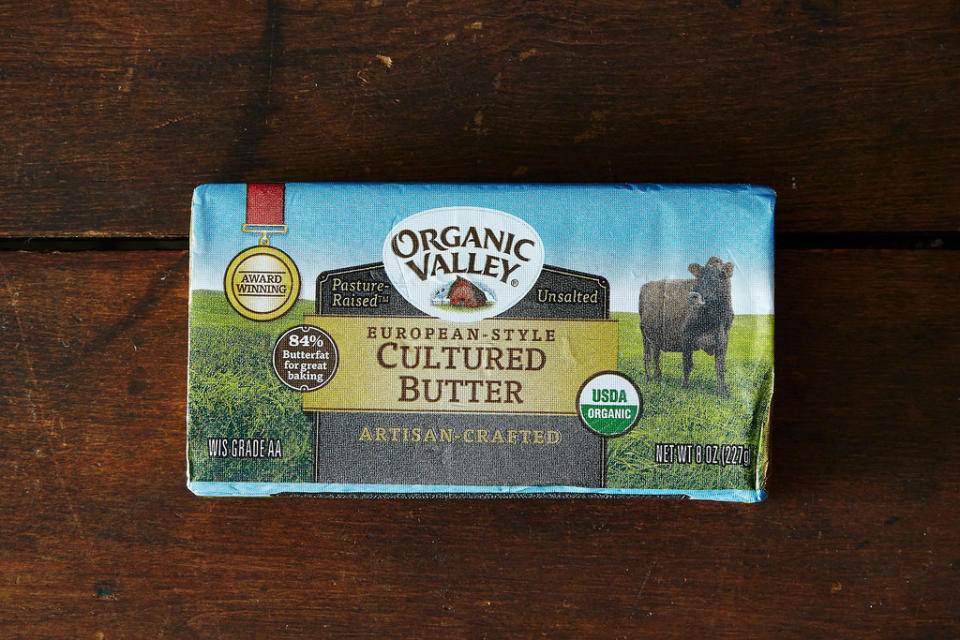
Organic Valley cultured butter. (Photo: James Ransom)
6. Pine Nuts
There’s no getting around the expense of pine nuts. Where I shop they’re $42.40 per pound. Likely they’re in that range where you shop, too. That’s because pine nuts take at least 18 months to mature and are a challenge to harvest.
Right now, there’s bag of pine nuts weighing about 1/5 of a pound in my fridge, for which I paid $7.21. That’s a fair amount of money, but if used sparingly and kept cool and dry, pine nuts last a while, and absolutely nothing else offers the shape, texture, and slightly sweet taste toasted and ground up in pesto or tossed in with a green salad.
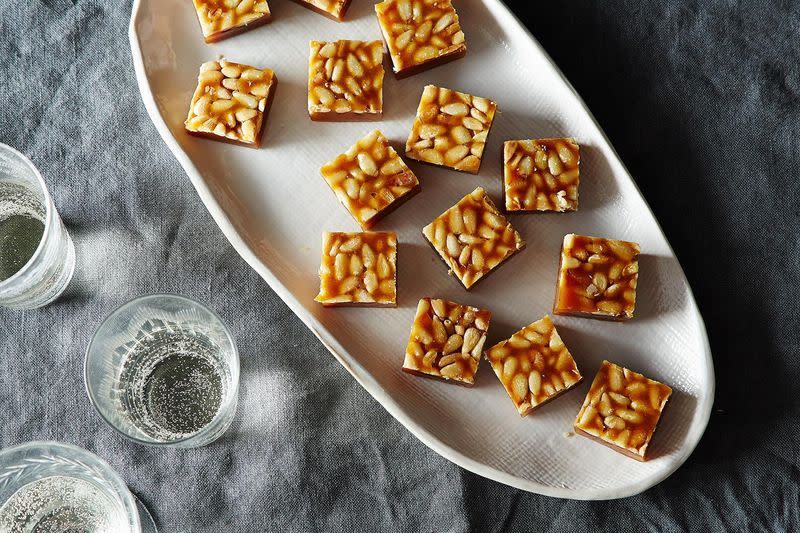
Pine nut bars. (Photo: James Ransom)
7. Anchovies
A four-ounce tin of Bel Aria white anchovies is nearly 9 bucks, and I’ve seen 7.4-ounce jar of regular anchovies from Spain go for a whopping $30.49. White anchovies are marinated in vinegar, while regular anchovies are cured and salted. In my view, there’s little reason to spend that much on these little fillets, when other brands cost far less — 4 ounces from Roland costs $3.99.
Some anchovy fans say the pricey ones are worth the money if you’re eating them whole in a salad or on a sandwich or a pizza. I buy a 1 ½-ounce package of anchovies from Crown Prince for $2.53 and they work just fine among my salad greens and in pasta sauces, where they dissolve in the cooking process, leaving behind a faint briny essence. If even that much fish is too much fish, there are work-arounds to achieve the umami anchovies bestow.
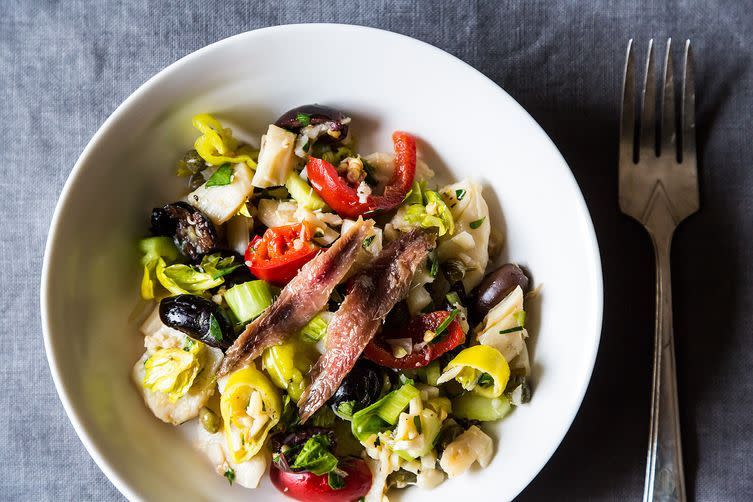
Mom’s Christmas Baccala Salad. (Photo: James Ransom)
8. Dried Cherries
What accounts for the high price of dried cherries? At my supermarket, two different kinds — dried Bing organic cherries from Uzbekistan and red tart cherries (also from Uzbekistan) — cost $24.20 per pound and $20.56 per pound respectively. Is it because they’re pitted, as one farm’s social media post suggested? Is it because they come from far away? Is it because their growing season is short and they’re a small fruit that get even smaller once dried?
Sure, they’re good but they’re not an essential part of my pantry (err, I live in New York City, let’s just call it a shelf). On that once a year occasion that I get a hankering for granola and make it myself, I’ll pass on the cherries and use dried cranberries ($2.99 for 6 ounces) instead.
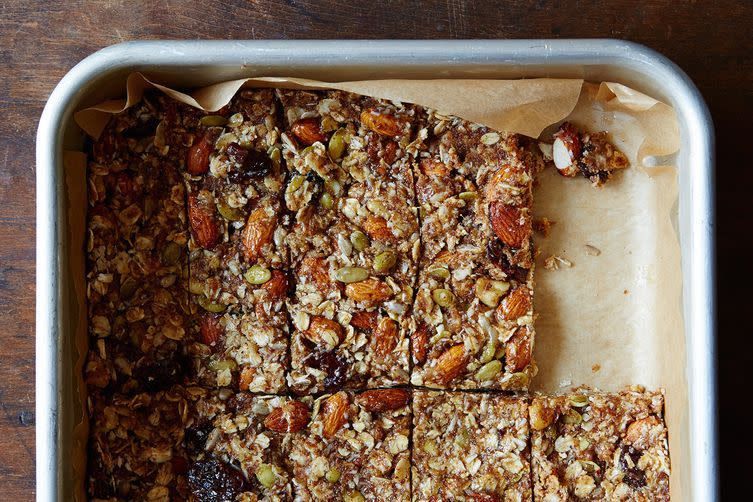
Bulk bin snack bars. (Photo: Mark Weinberg)
9. Sun-Dried Tomatoes
Sure, they’re delicious on a sandwich with olive oil, cheese, and basil, but sun-dried tomatoes are not for the light-walleted among us. At my neighborhood market, a 10-ounce jar of them in olive oil costs $8.99; they’ll be pricier still at the deli counter or from bulk barrels where they’ve likely been dried more recently. If you buy them in a container without oil, they’re cheaper—about $7 for 12 ounces via FreshDirect.
If that’s still too much money, try making them yourself, though be advised it’s a laborious process that calls for roughly 5 pounds of fresh tomatoes to yield 2 cups of dried ones. What you save in money, you might pay for in time.
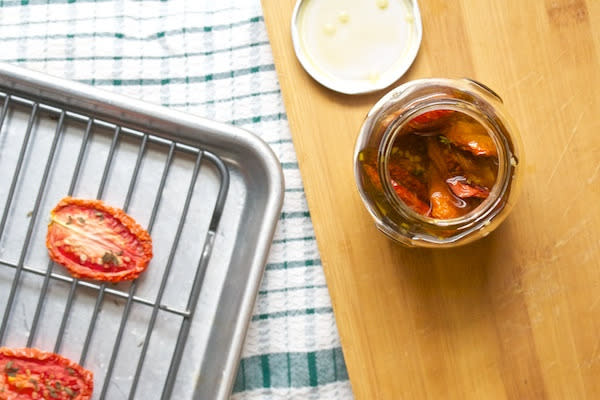
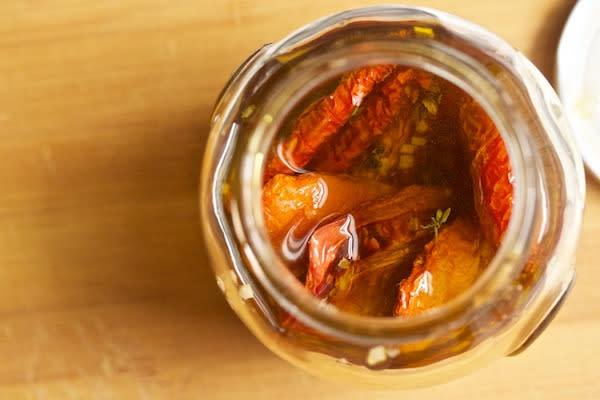
Sun-dried tomatoes. (Photo: Cara Eisenpress)
10. Parmesan
With respect to Oliver!, I find myself tweaking one of its anthems into “Cheese, glorious cheese!” There are so many to adore, after all. But what’s the difference between Parmesan and Parmigiano-Reggiano, both considered excellent pasta enhancers? The price, for one.
At Fairway, a wedge of Parmesan costs $8.99 a pound (or you can get a pre-shredded, pre-packaged 4-ounce container of it for a very reasonable $5.29). That’s a lot, but nothing compared to the $15.99 a pound that the wedge of Parmigiano-Reggiano sets you back. It comes down, mostly, to official decrees over naming rights. A 2008 European Union decree asserted that cheese that’s called Parmigiano-Reggiano can only be called that if it hails from the Parma region of Italy.
And then there’s shredded Parmesan in bags—which, to me, is lazy. I like grating it myself and typically get Parmesan over Parmigiano-Reggiano because of expense, unless I’m feeling particularly flush and want to pretend I’m someone for whom imports are de rigeur.
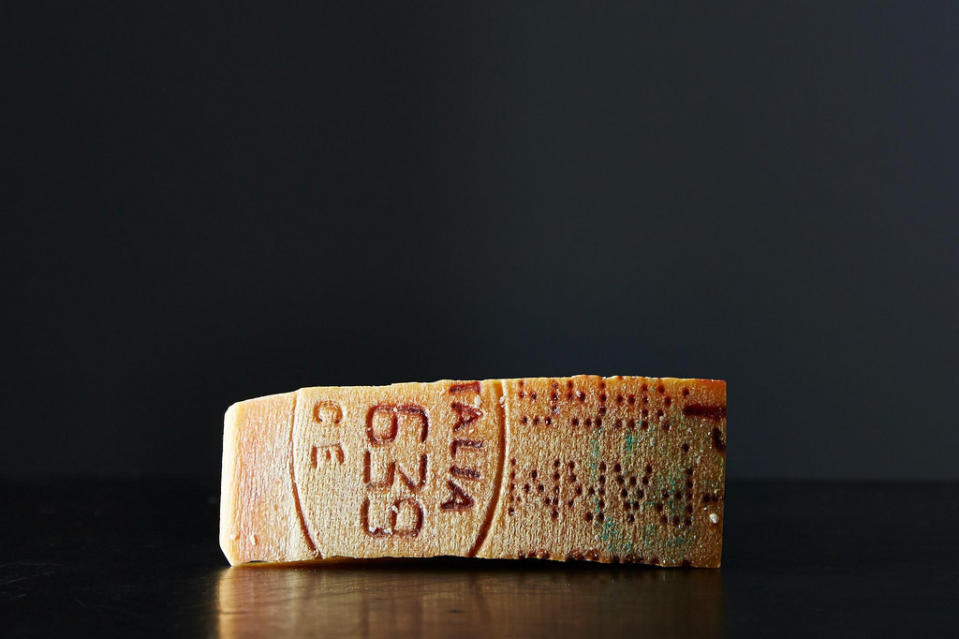
Parmesan rind. (Photo: James Ransom)
11. Almond Butter
Peanut butter is every (allergy-free) child’s go-to spread. It’s easy and healthy. It tastes good. And at $4.88 for a 16-ounce jar of organic peanut butter from Once Again, for instance, it’s cheap.
Almond butter appeals to more refined tastes. Or if not that, then at least more expensive ones. The same amount of almond butter from the same company costs, where I shop, $13.36. Almonds, which in the United States only grow in California, take a lot longer to harvest; it takes a tree three years to get to the point where it can start producing nuts.
Peanuts, on the other hand, take four to five months to yield produce, and they’re self-pollinating. In recent years, almonds have gotten a bad rap as a major water consumer on the drought-ravaged West Coast. But they’re still around and still beloved all over the world. I love almonds — less so almond butter, but I could be convinced to give making it myself a whirl, just to see if I can be convinced to make it a staple.
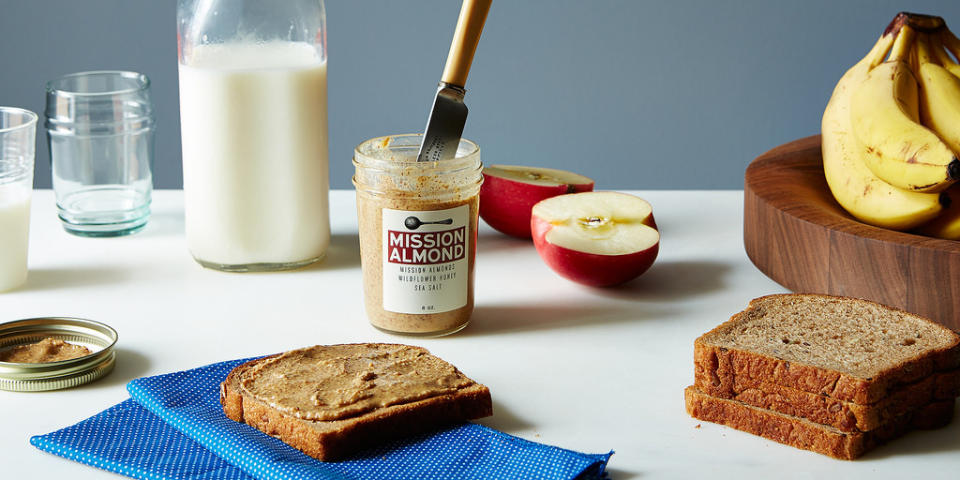
Mission almond butter. (Photo: James Ransom)
By Sara Ivry.

